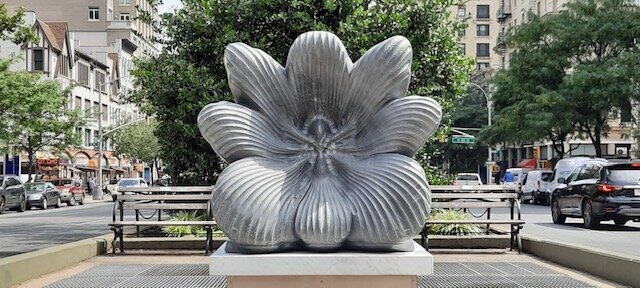Jon Isherwood
Jon Isherwood’s work has been widely exhibited in public museums and private galleries around the United States, Canada, and Europe. He is the recipient of a Jerome Foundation Fellowship, a grant from the Pollock-Krasner Foundation, and an Honorary Doctorate from the University of New York at Plattsburgh. His sculpture has recently been exhibited at Ville Strozzi, Florence, Italy; deCordova Sculpture Park and Museum, Lincoln, Massachusetts; The Today Museum, Beijing, China; the museum at Grounds For Sculpture, Hamilton, New Jersey; and in Belgrave Square, London, England. He has had more than 20 solo exhibitions, including Reeves Contemporary in New York, John Davis Gallery in New York; Maiden Lane Exhibition Space in New York; the C. Grimaldis Gallery in Baltimore; Pyramid Hill Sculpture Park and Museum in Hamilton, Ohio; and the Sculpture Court in Southampton, New York. He has been featured in many group exhibitions, including the Peggy Guggenheim Museum in Venice, Italy; The McNay Museum, San Antonio, Texas; Derby City Museum, Derby, England; and Kunsthalle, Mannheim, Germany. His work can be found in more than 22 public collections.
Isherwood’s work has been reviewed in The New York Times, Art in America, ARTnews, The Washington Post, The New York Sun, Sculpture magazine, Partisan Reviews, The Philadelphia Enquirer, and in The Timesand The Guardian in the United Kingdom. He has made personal appearances on shows featuring his work, including WAMC Public Radio and The Culture Show, BBC Television, England. He has lectured at numerous colleges and universities in the United States and Europe.
Jon Isherwood's sculptures represent the further development of his ongoing dialogue with the associative sensations of form and surface. Forms are compressed, distorted, or squeezed, and made more intimate by subtle adjustments of scale. He does not imitate the body; however, the sensual aspect of the manipulated shape proposes physicality to the viewer even in the absence of figuration. Carved lines contour the surfaces to emphasize the form, create the illusion of expansiveness and provoke associations to patterning, layering and veiled imagery. We are invited to investigate the visual grasp of intuitive perception.
The tension between shape and skin that characterizes Isherwood's work is further reflected in the tensions surrounding his technique and material. His sculptures are the result of a unique process in which the ancient and the modern confront one another: marble, the oldest and most sensual sculptural material, is carved with the help of high-tech methods. This allows Isherwood to attain an uncompromised precision in his treatment of the incised surfaces, which play with and against the swelling, fleshy, soft and yet substantial character of his organic forms.









